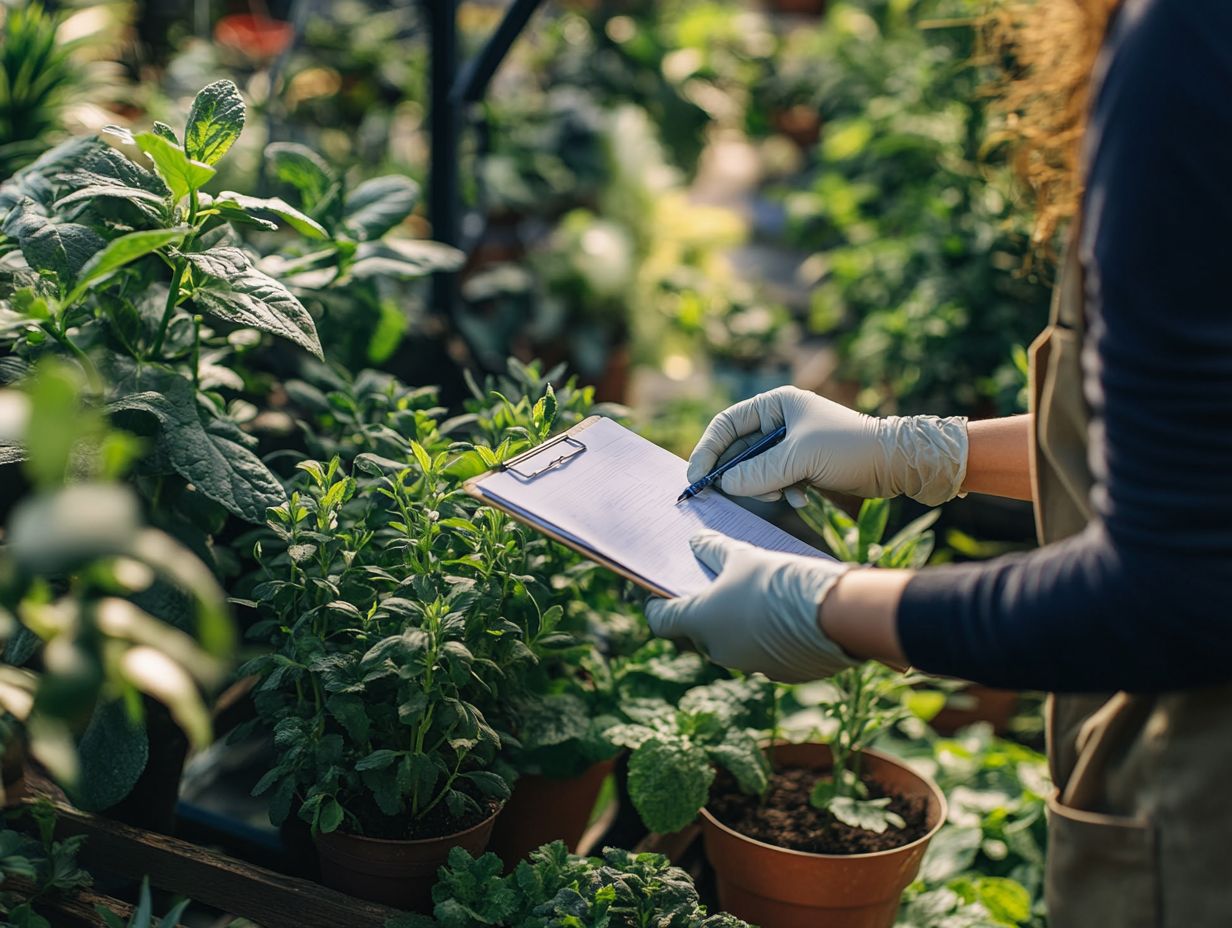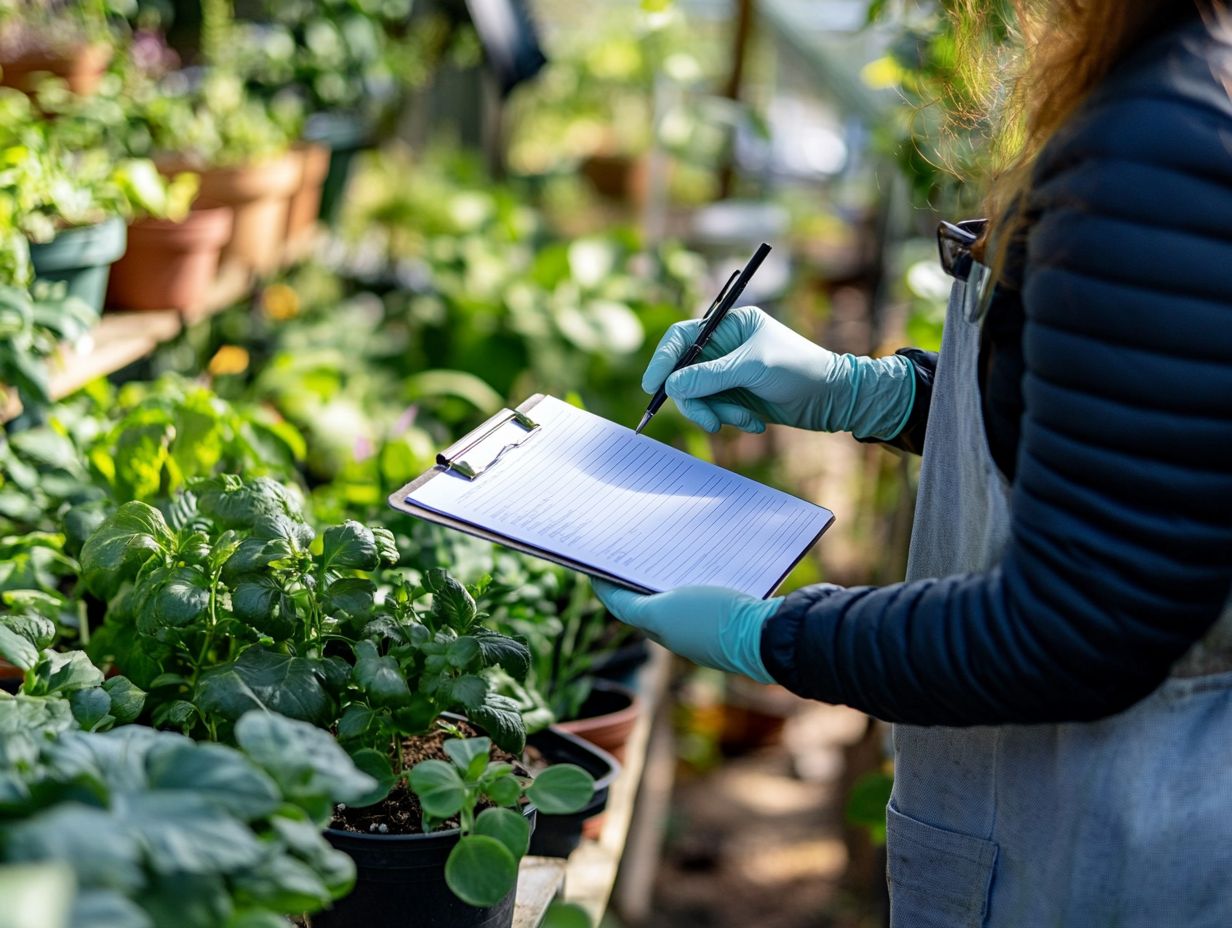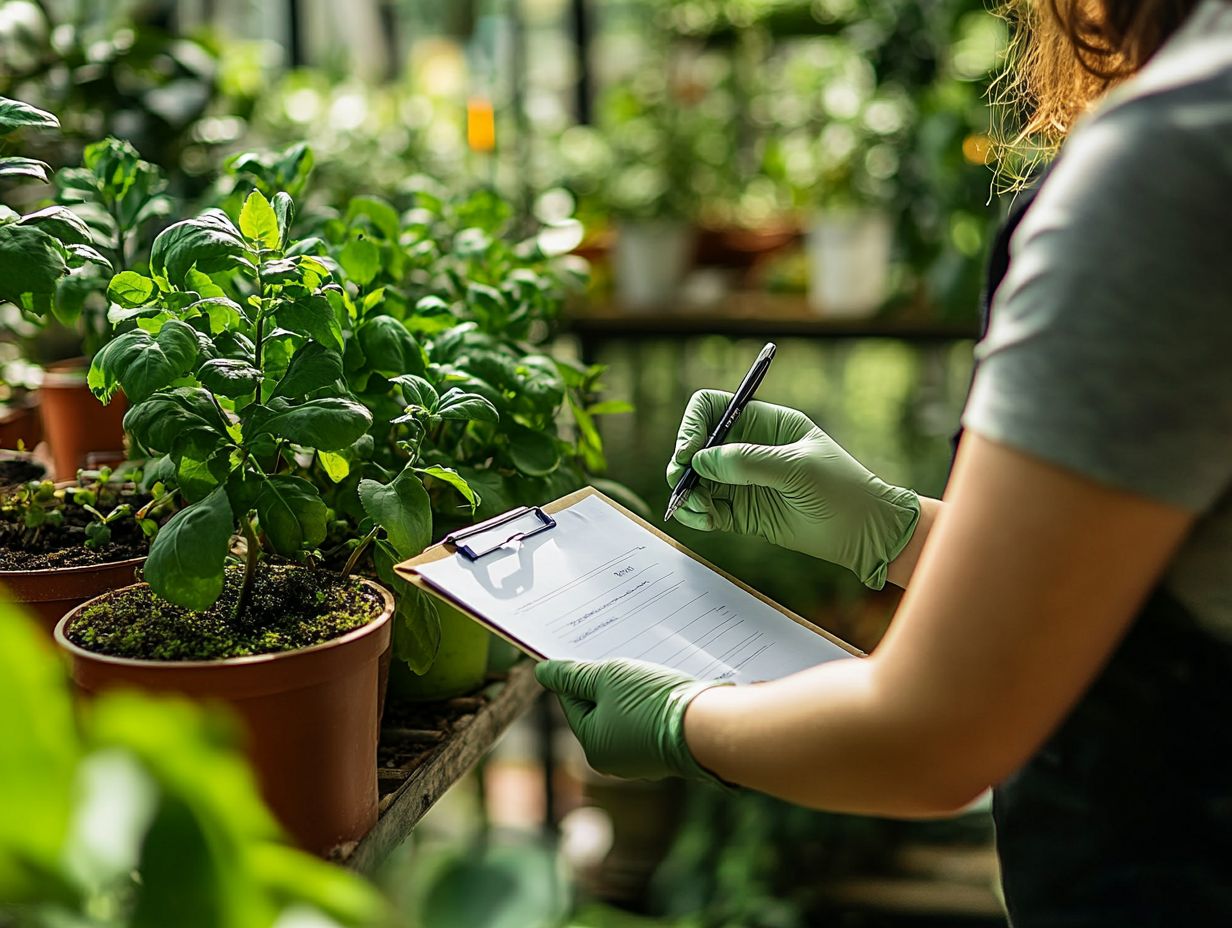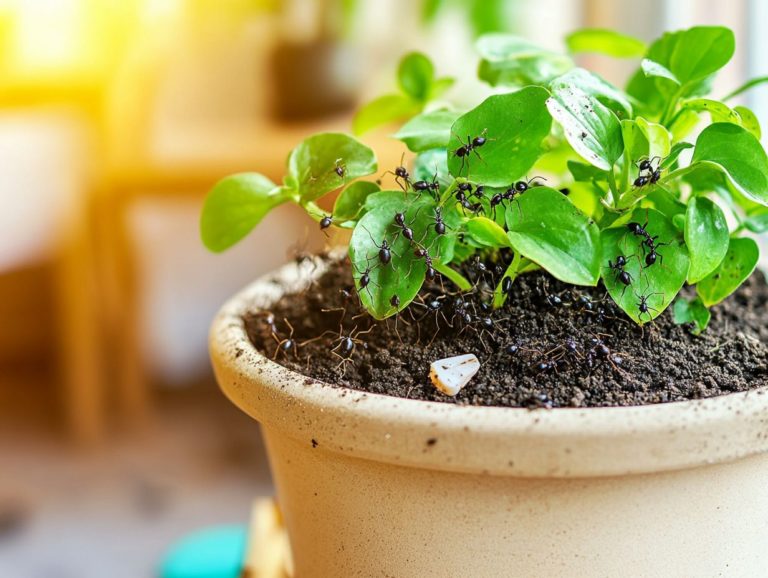How to Create a Regular Plant Inspection Routine
Ensuring the safety and efficiency of industrial plants is vital in today s fast-paced landscape.
Regular plant inspections help identify potential hazards and maintain operational excellence. This article explores the key elements of a successful inspection routine.
You ll learn what to check, how to create a comprehensive checklist, and the tools to streamline your inspections.
It also outlines a step-by-step process for conducting thorough inspections and addressing any issues that arise. Discover best practices to enhance your inspection efforts and keep your plant operating seamlessly.
Contents
- Key Takeaways:
- The Importance of Regular Plant Inspections
- What to Include in a Plant Inspection Routine
- Creating a Checklist for Plant Inspections
- Tools and Equipment for Plant Inspections
- Conducting a Plant Inspection
- Addressing Issues Found During Inspection
- Frequently Asked Questions
- What is a regular plant inspection routine?
- Why is it important to have a regular plant inspection routine?
- How often should a plant inspection routine be conducted?
- Who is responsible for conducting a regular plant inspection routine?
- What are some key steps to follow when creating a regular plant inspection routine?
- Can technology be used to assist with a regular plant inspection routine?
Key Takeaways:

- Regular plant inspections are crucial for ensuring safety and efficiency in the workplace.
- A complete inspection routine should cover key areas like machinery, equipment, and safety rules.
- Creating a checklist and using recommended tools can help you organize tasks during inspections.
The Importance of Regular Plant Inspections
Regular plant inspections are essential for maintaining safety and operational efficiency across various industries, such as manufacturing and healthcare.
By adopting a solid plan to prevent breakdowns, you can reduce equipment downtime and improve maintenance practices.
Systematic maintenance inspections promote quality by identifying potential issues before they escalate. This protects your assets and optimizes your maintenance efforts.
Ensuring Safety and Efficiency
Safety and efficiency in plant operations directly impact equipment performance and overall productivity.
By following established safety rules, you protect your workforce and improve maintenance efforts.
Implementing safety measures provides a structured approach to equipment upkeep. This minimizes downtime and maximizes reliability.
Regular inspections aligned with safety protocols help prevent unexpected failures, ensuring smooth machinery operation. A commitment to safety fosters a culture of engagement among employees, enhancing hazard awareness and streamlining daily tasks.
What to Include in a Plant Inspection Routine
An effective inspection routine needs a clear plan that outlines the necessary procedures, sets inspection frequency, and identifies key performance indicators.
This structured approach ensures that nothing is overlooked and that operations maintain high safety and efficiency standards.
Key Areas to Check
During inspections, focus on key areas like safety compliance, equipment inspections, and reviewing maintenance history for recurring issues.
Evaluate critical systems such as electrical panels, pressure vessels, and safety alarms. Also, check personal protective equipment (PPE) to ensure it meets safety standards.
It’s crucial to assess emergency exit routes and fire suppression systems to prevent accidents. A thorough maintenance history review reveals trends in equipment performance and highlights areas for proactive upgrades.
Creating a Checklist for Plant Inspections

Crafting an effective checklist is vital for enhancing your maintenance approach and ensuring consistent inspection procedures.
Organizing and Prioritizing Tasks
Organizing and prioritizing tasks within your inspection checklist can significantly elevate inspection outcomes and streamline the corrective action process.
By establishing clear criteria for urgency and importance, you can direct your team’s focus toward high-impact areas that demand immediate attention. This approach not only fosters a systematic methodology but also empowers your personnel to allocate their resources judiciously.
This ensures that all critical maintenance aspects are addressed promptly. Effective oversight during inspections cultivates a culture of continuous improvement, allowing your organization to adapt swiftly and efficiently to unforeseen challenges.
This structured task management paves the way for timely corrective actions, minimizing downtime and enhancing overall performance.
Tools and Equipment for Plant Inspections
Utilizing the right tools and equipment for plant inspections, including advanced technology and computer management systems for maintenance, is essential for ensuring that your inspections are both thorough and efficient, especially in the context of asset management.
By leveraging these resources, you can enhance the accuracy of your assessments and streamline your processes. This ultimately preserves the integrity of your operations.
Recommended Tools and How to Use Them
Recommended tools for conducting plant inspections include advanced maintenance software that streamlines inspection procedures and enhances data analysis.
In addition, specialized inspection cameras and drones can significantly elevate your visual assessments, so you can capture high-resolution images of hard-to-reach areas that often go unnoticed.
Mobile inspection apps further simplify data entry, enabling your teams to document findings in real-time while on-site.
Incorporating sensors like temperature and vibration monitors allows for continuous tracking of equipment health. This alerts personnel to potential issues before they escalate.
Embracing these technologies improves the accuracy of your data collection and boosts overall efficiency. It allows your teams to focus on critical insights instead of getting bogged down in manual data gathering.
Integrating these modern tools means reduced downtime and proactive maintenance strategies, ensuring your operations run smoothly and effectively.
Conducting a Plant Inspection
Conducting a comprehensive plant inspection requires you to adhere to established procedures meticulously. You ll want to employ techniques such as visual inspections.
Ensuring that proper documentation accompanies each step of the process enhances accuracy and reinforces the integrity of the inspection. It also improves employee morale.
Step-by-Step Guide for a Thorough Inspection

A step-by-step guide for a thorough inspection emphasizes the implementation of systematic procedures, including visual inspection and tests that don t damage the equipment, leading to effective maintenance solutions and optimal outcomes.
By meticulously examining each phase, you can gain insights that enhance the inspection process and elevate your awareness of potential issues.
The first stage is preparation, where you establish a clear understanding of the objectives and scope. This allows you to gather the relevant tools and documentation necessary for the task at hand.
Next, during the execution phase, you make observations methodically. This careful approach significantly impacts the accuracy of your findings and the recommendations that follow.
Finally, follow-up actions such as compiling reports and implementing corrective measures reinforce the importance of continuous improvement. This fosters an environment where maintenance and safety are prioritized, helping you stay ahead of potential challenges.
Addressing Issues Found During Inspection
Addressing the issues identified during inspection is essential for continuous improvement in your maintenance strategy. It demands a systematic approach that includes implementing corrective actions, conducting a thorough analysis to find the main reasons behind issues, and planning maintenance follow-ups.
This method ensures continuous improvement and enhances overall performance.
Effective Solutions and Follow-Up Actions
Implementing effective solutions and follow-up actions based on your inspection findings is crucial for achieving performance improvement and ensuring timely equipment repair as part of your maintenance follow-up. This process tackles immediate issues and sets the stage for lasting reliability in your operations!
By establishing a systematic approach to document and assess your findings, you equip yourself with the data necessary for informed decision-making. Scheduling regular plant maintenance checks becomes paramount, allowing you to proactively identify potential failures before they escalate.
Engaging your staff in training programs gives them the power with the tools and knowledge needed to better manage equipment, fostering a culture of improvement throughout your organization. Employing strategies like looking for the main reasons behind issues and feedback loops can significantly enhance the likelihood of your effective solutions translating into long-lasting benefits.
Frequently Asked Questions
What is a regular plant inspection routine?
A regular plant inspection routine is a scheduled process of inspecting and assessing the condition of various equipment, machinery, and processes in a plant facility to ensure they are functioning properly and safely.
Why is it important to have a regular plant inspection routine?

A regular plant inspection routine helps to identify potential hazards, prevent breakdowns and accidents, ensure compliance with safety regulations, and maintain overall efficiency and productivity of the plant.
How often should a plant inspection routine be conducted?
The frequency of plant inspection routines depends on the type of equipment and processes involved. It is recommended to have weekly, monthly, and annual inspections to cover all necessary aspects of the plant.
Who is responsible for conducting a regular plant inspection routine?
A trained team of engineers and safety officers is responsible for conducting inspections. They should be familiar with the equipment and processes and have the necessary knowledge and skills to identify potential issues.
What are some key steps to follow when creating a regular plant inspection routine?
Some key steps include identifying the equipment and processes that need to be inspected, developing a checklist, scheduling inspections, assigning roles and responsibilities, and documenting all findings and actions taken.
Can technology be used to assist with a regular plant inspection routine?
Yes, technology can assist with a regular plant inspection routine. Various tools and software can help with equipment monitoring, data collection, and analysis, making the inspection process more efficient and accurate.
Ready to elevate your maintenance strategy? Start implementing these practices today!






